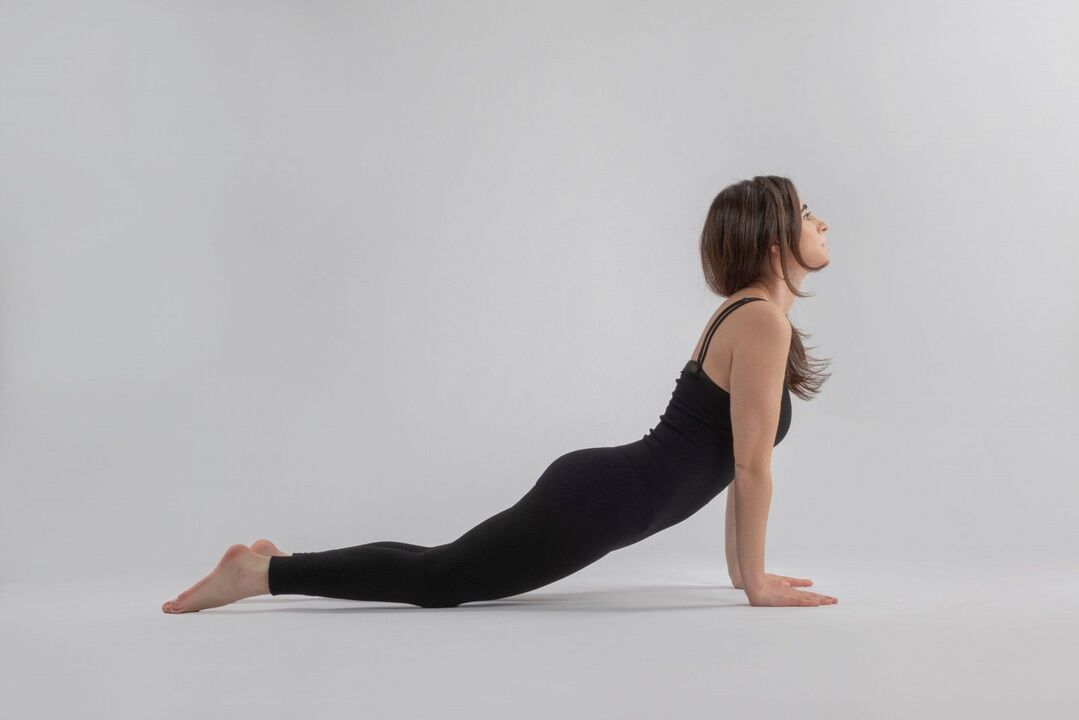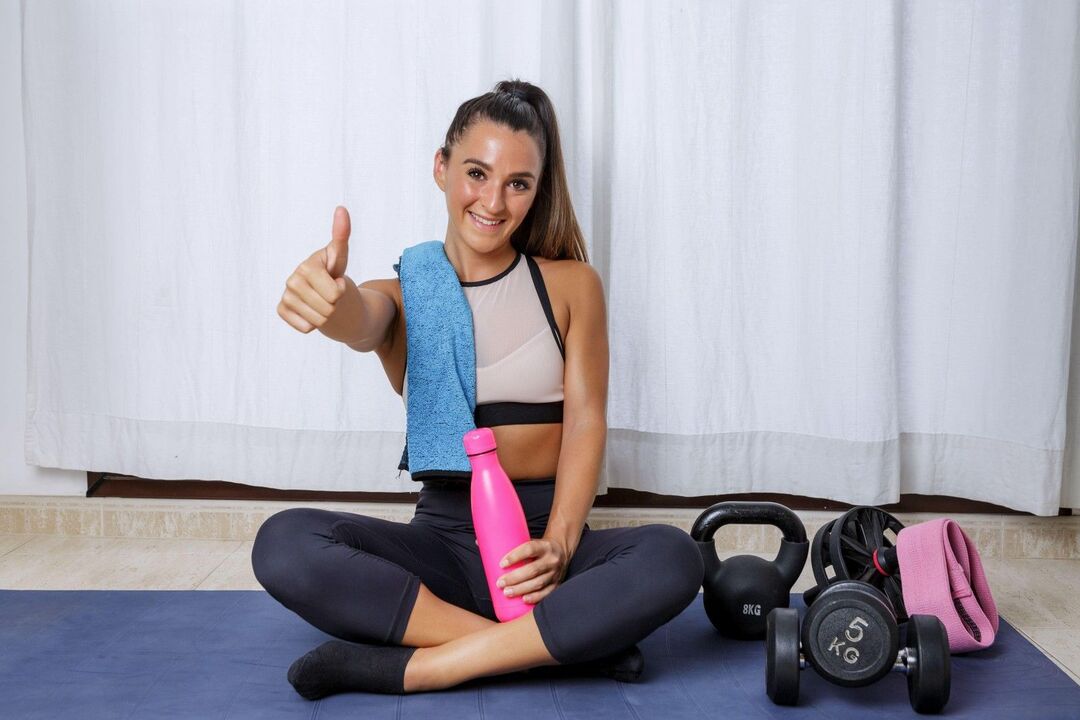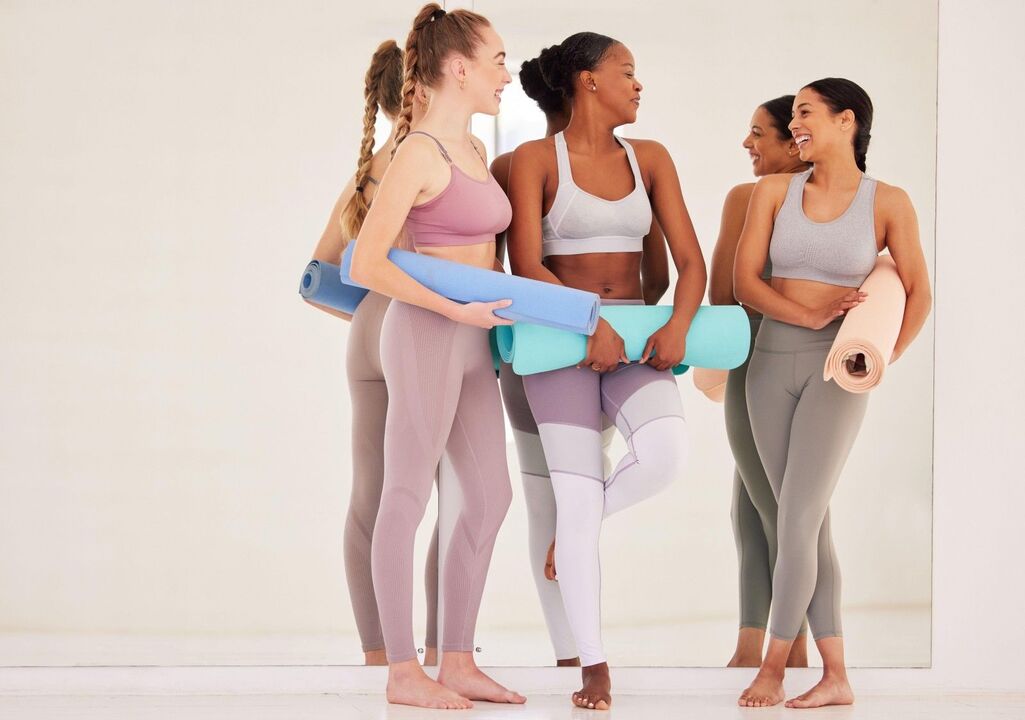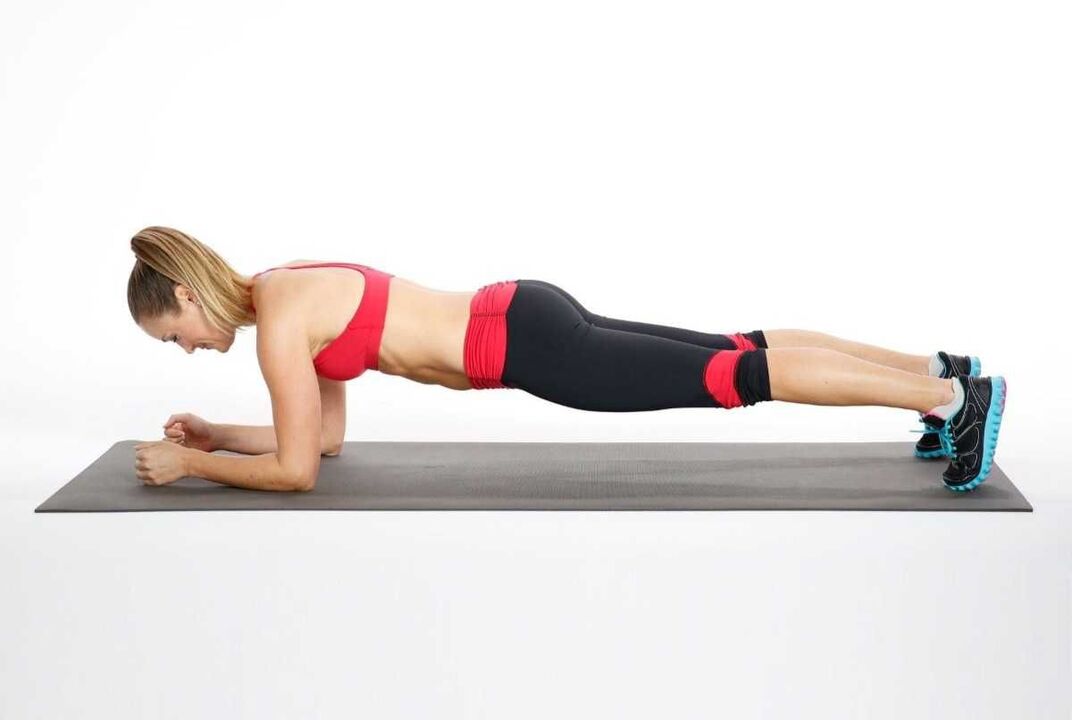Over the past decade, the plank exercise has become incredibly popular. Simple and accessible to all, the plank offers surprising results after a month of daily practice. A wave of flash mobs, video tutorials and online plank marathons has swept the Internet, promising surefire success in the fight against excess weight. The exercise is used in many training complexes, is often included in treatment programs and is perfect for home workouts.
What is a board
The plank is a static exercise that derives from yoga and is classified as isometric: contracting the muscles involved without changing the position of the body. It is difficult to overestimate the benefits of plank, because this exercise is one of the key exercises for strengthening the core - the muscle corset, which includes the abdomen, back and hips. In power yoga exercise complexes, the pose when performing the plank is called the pose for developing balance and strength.
There are different types and variations in the complexity of the plank, which involve different muscle groups. The essence of the exercise is to stay in the pose for as long as possible, leaning on four limbs: the palms (elbows) and toes, creating a uniform line almost parallel to the ground. When positioned correctly, a harmonious contraction of all active muscles of the body occurs.

Does planking help remove belly fat?
Plank is an excellent exercise for training the muscle corset, abdomen, back, shoulders and neck, which helps maintain the overall tone of the body. But plank alone cannot guarantee the effectiveness of burning belly fat. The majority of the planet's population, leading a sedentary and sedentary lifestyle, accumulates reserves of visceral (internal) fat, which is necessary to protect the abdominal organs. But excess visceral fat leads to obesity in the abdomen, stomach and hips. You can combat excess deposits by timing your diet and physical activity so that you consume more calories throughout the day than you get from food. Without a daily calorie deficit, training will only help strengthen the muscles in your body. Your abs will tighten, your posture will straighten, and only then will your belly fat gradually begin to disappear.
One of the main exercises of the complex aimed at fighting belly fat is the plank. For beginners in weight loss, the duration of its implementation starts from 10 seconds. The main thing when performing is to ensure the correct posture, otherwise the desired effect will not be achieved.
Benefits of the plank
The main advantage of the plank compared to other exercises is the accessibility of its execution: you need a more or less flat surface, desire and a little time. If you start the day without getting out of bed with a short warm-up that includes a plank, the body wakes up quickly, the muscles are saturated with oxygen, and the sympathetic nervous system is excited, preparing for the stress of the day. If possible, it is worth sitting on a plank several times during the day to tone your body, especially when working in a sedentary manner.
Additionally, methodically performing this exercise over a long period of time will help:
- tighten your stomach, straighten your back;
- relieve tension in the muscles of the spine and shoulder girdle;
- improve blood circulation and oxygen supply to body cells;
- develop a sense of balance and equilibrium;
- increase the body's resistance to physical activity.
Like any physical exercise done with pleasure, the plank stimulates the production of the hormones of happiness and good mood: serotonin and dopamine.

Contraindications
Despite such simplicity and accessibility of the exercise, there is a group of people for whom performing the plank is limited or completely contraindicated:
- for an injured spine, intervertebral hernia, displaced discs;
- after major operations;
- during the period of colds and viral diseases or exacerbation of chronic diseases;
- for cardiovascular problems;
- in the last trimester of pregnancy and immediately after the birth of the baby.
Women should perform the plank with caution during their menstrual period. Overexertion of the lower abdominal muscles is dangerous due to bleeding and cramps.
How long to stand on the board
The time spent on the board is selected based on the state of the body and physical fitness. For untrained people, instructors recommend starting with 10-20 seconds for several approaches with 10-second breaks. Gradually, the load can be increased to 30-40 seconds. If you decide to seriously get into shape and are planning long-term exercises, you can create a personal program for several weeks to gradually increase the duration of exercise up to 3-5 minutes. You should not overdo it and try to stand for too long in the first days, this can lead to overload and destruction of muscle fibers.
How often to do a plank
To achieve tangible results, regular exercise is important. Spend a few minutes on the plank every day, morning and evening. If possible, don't stay in the plank position for long periods of time during the day. Remember that exercise will help your body tone and relieve back tension and neck fatigue. The evening approach should take place no later than one hour before going to sleep.

How to do it right
The correct plank technique leads to significant results. When doing the plank, don't forget the position of your arms, legs and torso. The classic plank requires precise positioning.
- the palms of the outstretched arms (or elbows bent at a right angle) rest on the floor at a right angle;
- the feet are raised and rest on the ground with the tips of the toes;
- the position of the body is almost parallel to the surface of the floor, the body is frozen in immobility;
- the eyes look straight down, the neck is straight in continuation of the body;
- the lower back does not bend, the stomach does not sag;
- all muscles are tense.
The closer your feet are together, the more difficult it will be to hold the board. Violation of the established canons can lead to damage to health.
For beginners
If you have firmly decided to use the plank to lose weight and have set yourself the goal of increasing the exercise time to 4-5 minutes per approach, start performing the plank according to a pre-developed program. Get in touch with a trainer and a doctor, let their advice help you create a comfortable and high-quality program for you.
If you decide to practice on your own, then it is better to start performing the plank by performing the classic type, gradually increasing the load and adding more complicated versions of the exercise. An example of a program for the first days of class is the following:
- in the morning, after waking up and a short warm-up, 4 sets of no more than 20-40 seconds with a 10-12 second break, make up a miniseries to be repeated several times if you still have strength;
- in the evening, an hour before dinner or no earlier than an hour later, the miniseries should be redone several times.
The version on the elbows is considered more difficult, so for beginners it is better to stand on a board with straight arms.

For men
The plank routine for men is slightly different from the female version due to the physiological characteristics. Nature created the male body to be durable, adapted to drag heavy objects and move quickly over long distances, which is why men have more developed legs, arms, back and shoulder girdles. Performing the plank in the male version, even for beginners, can be complicated by the different types of this exercise: lateral plank, plank with alternate lifting of the limbs - 4-5 times for 30-40 seconds, repeating the miniseries 3-4 times.
For women
Since the beginning of time, the female body has been adapted to accumulate a "protective belt" on the stomach and hips to protect future offspring: this is how Nature wanted it. Due to the general tendency to accumulate excess fat in the abdominal area, the plank is almost a panacea for women. It helps to strengthen the muscles of the problem area, arms, legs and saves from osteochondrosis and age-related problems in the back and cervical spine.
Types of boards
There are several varieties of the plank exercise:
- classic on the elbows;
- classic full on the arms;
- classic with lifting of a limb;
- right and left lateral;
- lateral with one leg raised;
- reverse or mirror.
From the classic full plank position:
- touch your shoulder diagonally with your hand;
- alternately raising the knee to the chest.
To get the best result, move from simple to more complex types.

Plank technique
Remember the most important "DON'Ts" not to be missed during training:
- do not allow your lower back and chest to drop below your elbows;
- do not raise your buttocks;
- turn your head so that your neck remains still and your eyes look at the floor.
Maintaining the correct technique for performing the plank is the key to achieving your goal: losing weight, strengthening your core muscles and giving your figure an elegant athletic shape.














































































